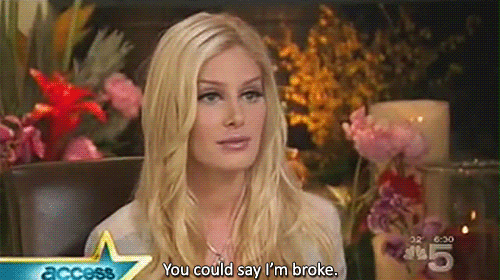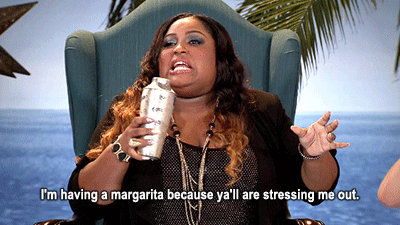When you’re on the job hunt, polishing your resume, writing a killer cover letter and prepping for the interview seem like all it takes to get the job, but that’s no longer enough. Today, social media is such a huge factor in scoring that sought-after position. Platforms like Facebook, LinkedIn and Twitter can help you in so many ways—but they can hurt you, too. That’s why we got the scoop on how to make your accounts work in your favor, so be sure to check out these crucial tips!
1. Clean it up
We’d like to think that potential employers are scoping out our social media accounts to find out how talented we are, but there’s a part of us that knows they’re really searching for dirt. So go through your tagged photos, statuses and link shares and remove anything that may seem even remotely offensive. That means any photos from last weekend’s rowdy party, your curse-word-filled rant about the bad day you had and the harsh comment you published alongside a link to a politician’s latest speech should go.
While you want to cleanse your profile of any potentially offensive content you published, Neal Schaffer, a social media strategy consultant, also says it’s necessary to scour friends’ posts on your profile and then remove inappropriate content. “You almost become guilty by association if a recruiter finds something inappropriate published on your own wall, even if by someone else,” Schaffer says.
If you have a friend who tends to post vulgar things on your wall, you may want to consider removing him or her as a friend on Facebook entirely, Schaffer advises. If that’s too drastic of a measure for you, Facebook also has a setting that requires you toreview and approve any posts made on your timeline.
Since your Facebook history may be vast, you can use the free app SimpleWash, which scans your entire profile and timeline for profanities, anything suggesting aggression and words of sexual nature or relating to alcohol. By the end of the search, the app gives you a letter grade based on how much it found.
2. Update your “About” section
Though Facebook may not be considered a professional networking site, it’s still a good idea to update your profile in a professional manner with basic information, such as your school, major or current job. If your resume lists your current major as advertising but your Facebook page lists the economics major you had before you switched six months ago, the discrepancy will confuse an employer and could reflect poorly on you.
According to Schaffer, you should be cautious if you choose to list your political party preference or religion. “Showing your affiliation is a risk,” he says. “It could work for you, but it could also work against you, and you’d never know it.” To prevent any potential stickiness, you may want to withhold your preferences altogether.
3. Craft a professional branded headline
While there’s nothing inherently wrong with a simple headline that explains you’re a student at MIT, make yourself stand out more by explaining what you currently do besides going to school, or what you are aspire to be, Schaffer says. “Ideally you want to … showcase your strengths and differentiate yourself in the limited [amount of space] you already have,” he says.
So instead of writing, “Student studying urban planning at MIT,” you could write, “Aspiring community development director and senior at MIT majoring in urban planning.” If you currently have an internship or hold a leadership position in an organization or campus club, be sure to mention it in your headline. By being as specific as possible, readers can see how you stand apart from others, and they’ll decide whether or not to read on from there.
4. Include a professional summary
The professional summary, which is located at the top of your page, is almost like an elevator pitch because it’s your one chance to draw a potential employer in. “With your summary, you have full control of what people will learn about you, and you can give [potential employers] a good picture of what you’re really about beyond your resume,” says Emily Miethner, founder of MCG Social, a boutique social media agency. “You’re really missing out on an opportunity if you don’t create one.”
For your summary, you could use generic terms to describe the type of worker you are, but alack of personalization will bore a viewer. Instead, include your interests and accomplishments in a non-robotic way. “You want to talk about what your specific passions are and how you are pursuing them,” Miethner says. “You want to impress whoever’s reading, so maybe expand on your biggest accomplishment that you could only mention briefly in your resume.”
5. Add other forms of media
Depending on what field you plan on going into, take advantage of the interactive feature of LinkedIn that allows you to attach your work. If you spent all summer writing for your local newspaper, you definitely want to attach your best articles. If you were a research assistant for a study, include the study, even if there isn’t a designated section with your name on it.
Adding media on LinkedIn is especially crucial if you’re going into any type of creative field. “As human beings, we process visual content much faster than non-visual content, so play that to your favor by adding any presentations, photographs or videos you may have worked on,” Schaffer says.
6. Clean it up
Tweeting is about sharing your thoughts and opinions with others, but you don’t want to share so much that it ends up costing you a job. Scroll through your past tweets and weed out any that may be inappropriate.
“As a rule of thumb, stay away from sex, religion and politics,” Miethner says. “So remove old tweets that may involve those topics and try to steer clear of them for future tweets.”
Beyond the topics Miethner mentions, it might be hard to discern what qualifies as offensive to the average person, but try to avoid any negativity, whether it’s about yourself or someone else. Don’t tweet about your horrible tendency to procrastinate or about how rude one of your professors was to you; neither message will reflect well on you.
7. Publish a personalized yet professional bio
Unlike LinkedIn, Twitter is not explicitly a professional tool, but you still want to act professionally, including in your bio. If you want to play it extra safe, you can copy and paste from your LinkedIn headline. But if you want to add a bit more flair, Twitter is the best place to do so.
“To some extent, Twitter is more playful, so you can have a different twist in your bio,” Schaffer says. “But make sure it’s still a part of your brand and it isn’t potentially offensive.”
If your current Twitter bio explains that you’re an aspiring engineer who studies at the University of Maryland, you could add a detail at the end that is less formal in tone, such as the fact that you’re a running enthusiast. Just don’t add any excess fluff (you only have 140 characters, anyway) and definitely leave out silly hashtags like #followforfollow or #yolo.
8. Interact with other influencers in your field
Using Twitter to socialize with friends is okay, but if you’re looking for a job, you should be joining or creating a conversation that involves professionals and topics from your field. “I’m a huge fan of putting yourself out there in a positive way as much as possible so others can get to know you,” Miethner says.
For example, if you dream of working in the magazine industry, join the conversation by tweeting about a particular article covering a subject you are passionate about. The next step would be retweeting or even replying to a tweet published by an editor from your favorite magazine. Even if your tweets don’t garner a response, it will show that you are actively putting in an effort.
“I recommend [engaging] once a week,” Schaffer says. “Try to post something that would be positive for your personal brand.”
While engaging may entail retweeting industry news or other interesting things you find, the bulk of it involves your active participation. Twitter is like one large conversation made up of millions of people, so join in and tweet at others in your field by asking them questions or responding to their tweets. You may not always get a response back, but at least you’re showing an eagerness to take part in the conversation.
On any platform
9. Think about your privacy settings
Whether you decide to scroll through your entire Facebook and Twitter histories or just adjust all of your privacy settings to make your content hidden, it’s completely up to you. But if a potential employer tries to look you up and sees that all of your profiles are hidden, you’re sending him or her a certain message, Schaffer says. “If they see that everything is private, they will start to wonder what you’re trying to hide,” he says.
Although there’s a risk in making too much private, Miethner says that it really depends on the career field you are entering. “If you’re applying for a social media job, you don’t want to make all of your accounts private, but with most other fields, there’s no definitive rule of thumb,” she says. “If there’s one platform that employers will understand if they find it’s private, it’s Facebook.”
10. Correct any inconsistencies
You want to make sure that across the board, all of your profiles have the same information. The layout and presentation may not necessarily be the same, but the details you publish about yourself should not be different. If you update one site, update them all. If you mention that you’re a senior on Twitter, but on LinkedIn you’re a junior, a potential employer could get confused, and you’ll just end up looking sloppy.
Schaffer suggests making your profile photos the same throughout; that way, an employer who’s already seen your LinkedIn profile can more easily confirm they’re looking at the right Twitter account. More importantly, he says keeping the same photo will strengthen your public persona. “Branding is all about consistency,” Schaffer says.
11. Proofread, proofread, proofread
Checking your accounts (especially LinkedIn) for errors may also seem intuitive, but you can easily ignore the task if you’re wrapped up in cover letter and resume editing. If you feel burnt out from proofreading, ask a parent or friend to read through your page. The fresh set of eyes will not only help in terms of finding potential spelling errors, but also in terms of how it reads from a perspective other than your own.
When it comes to Twitter, you may not want to go through your entire history checking for mistakes, but keep in mind that you should always double-check what you type before you hit tweet. How embarrassing would it be if you applied for a copy-editing job and an employer came across a tweet in which you accidentally typed the wrong version of “there”?
Now that you know the most crucial ways to update your profiles, you’re already on your way to having an impressive online presence. Who knows—maybe going through your old posts will be a funny walk down memory lane.


































































































